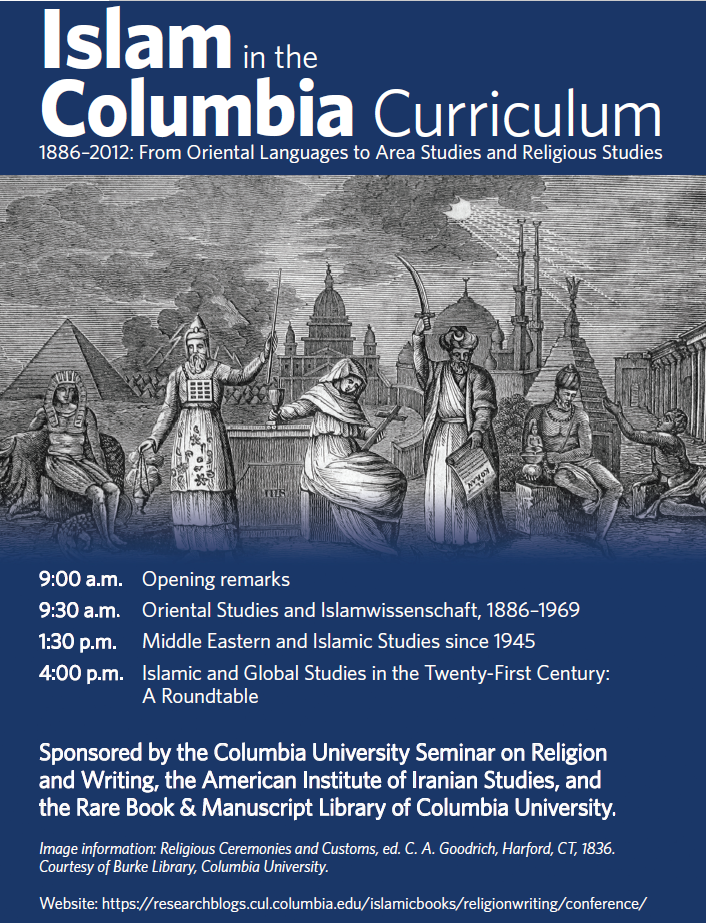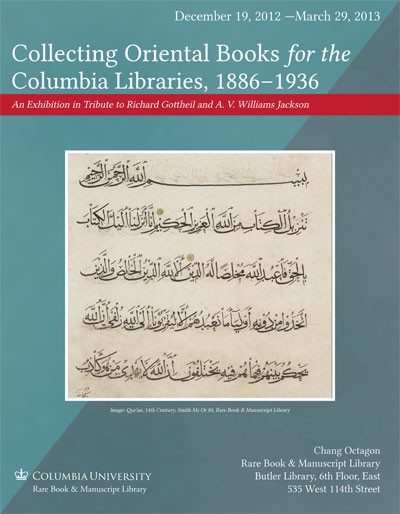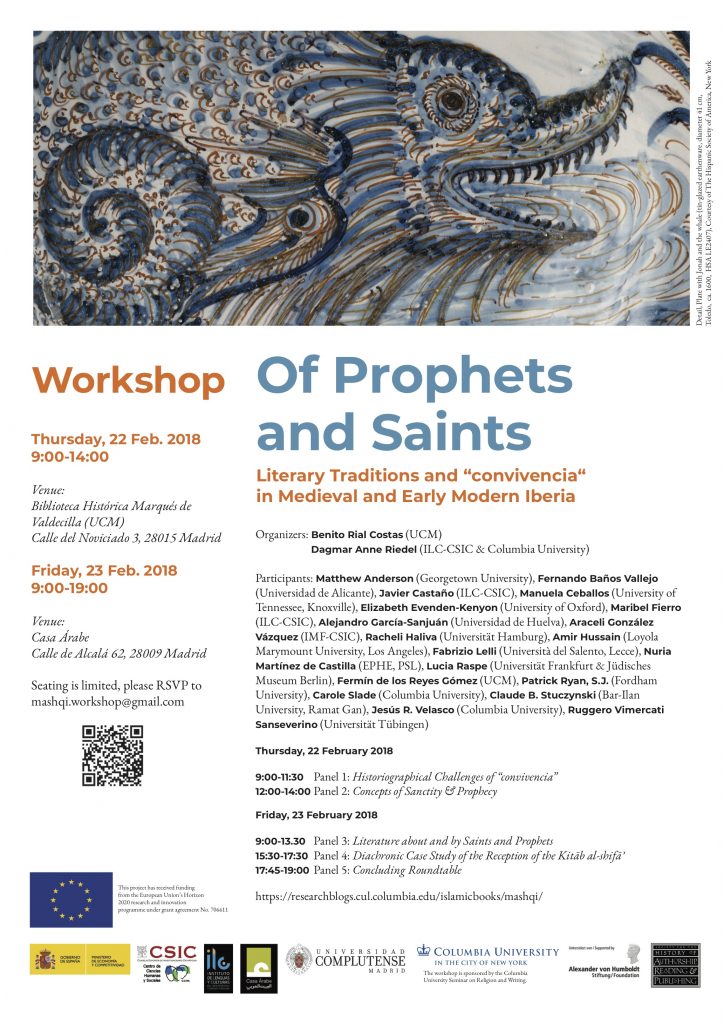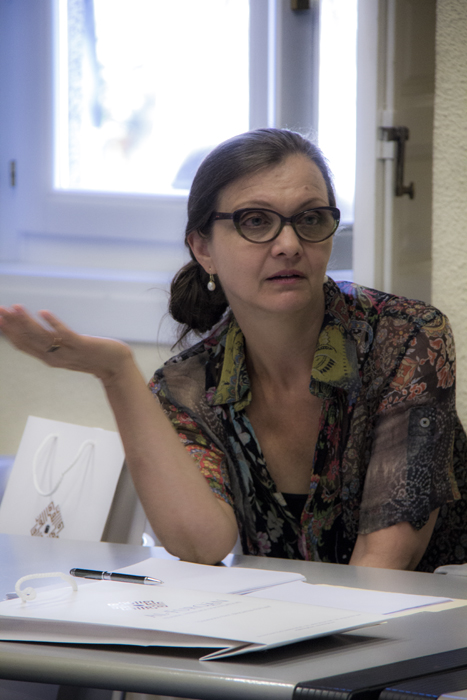My name is Dagmar Anne Riedel. I am a Middle East historian and the author of all posts and pages of this WordPress site. The blog was established in the fall of 2011, when I was an Associate Research Scholar at Columbia’s Center for Iranian Studies, where I worked as one of the Associate Editors of the Encyclopaedia Iranica (fasc. 1.1-, 1982–). For comments and questions I can be reached at dar2111 [ at ] columbia.edu.
The site is dedicated to books in Arabic script as the material evidence of the intellectual and cultural history of Muslim communities in Eurasia and Africa. However, when other issues preoccupy me, I write about them as well. Because of how WordPress prefigures its software, the site combines blog posts, which I irregularly publish under Home, with stable pages for four research projects.
The first two projects reflect my long-standing interest in the interdependence between the cross-cultural transmission of knowledge in Eurasia and Africa, on the one hand, and the history of Middle Eastern and Islamic studies in Western Europe and North America, on the other. Books in Arabic script have circulated not only among those who lived in Muslim communities, but also outside Muslim communities because of the interest of non-Muslims in Islam as a monotheistic religion, its theology, history, and culture. In the course of violent conflicts and natural disasters, books in Arabic script were looted and destroyed by non-Muslims as well as Muslims; see for example the countless stories about burning copies of the Iḥyāʾ ʿulūm al-dīn (“The revival of religious sciences”) by Ghazālī (1058-1111 CE) in al-Andalus. At the same time, the international trade with books in Arabic script between Muslims and non-Muslims, local populations and foreigners, was part of the international trade across Eurasia and Africa long before the rise of European colonialism and imperialism in the nineteenth century.
In 2013 I organized at Columbia University a one-day conference about Middle Eastern and Islamic Studies at Columbia University, 1886-1959, which was accompanied by a brick-and-mortar exhibition in the Chang Octagon of Columbia’s Rare Book and Manuscript Library (RBML). The exhibition was in honor of the 150th birthday of the Columbia University professors Richard J. H. Gottheil (1862-1936) and A. V. Williams Jackson (1862-1937), and explored their impact, as professors of Semitic and Iranian languages, respectively, on the development of Columbia Libraries’ oriental collections between 1886 and 1936. For the exhibition I collaborated with Rare Book Librarian Jane R. Siegel. Unfortunately, RBML broke its commitment to preserving the brick-and-mortar exhibition in a digital version; I have therefore deposited important documents related to both the exhibition and the conference in Columbia’s Academic Commons (https://doi.org/10.7916/d8-kq4c-b797).


From February 2017 until April 2019 Columbia University granted me a leave of absence so that I could accept a Marie Curie Fellowship at the Spanish National Research Council (Consejo Superior de Investigaciones Científicas, CSIC) in Madrid. The Marie Curie project was a study of the manuscript tradition of the Kitāb al-shifāʾ bi-taʿrīf huqūq al-Muṣṭafā (“The book of healing concerning the recognition of the true facts about the Chosen One”) by ʿIyāḍ b. Mūsā al-Yaḥṣubī al-Sabtī (1083-1149), also known as Qāḍī ʿIyāḍ. As part of the fellowship I organized together with Benito Rial Costas (Universidad Complutense de Madrid, UCM) in Madrid a two-day workshop titled Of Prophets and Saints: Literary Traditions and “convivencia” in Medieval and Early Modern Iberia; Benito and I are currently preparing selected contributions to the workshop for publication.

The other two projects developed from my abiding interest in contributing to the integration of the study of manuscripts and printed books in Arabic script into codicology and book history at large, as both fields continue to be dominated by research on manuscripts and printed books in “western” languages.
Since 2012 I am opportunistically collecting references for a systematic bibliography of Resources for the History of Islamic Books taking as a starting point the observation that the book in Arabic script emerged in late antiquity in the literate societies of the eastern Mediterranean, Mesopotamia, and Iran. This bibliography includes a section on findings aids for manuscripts in Arabic script in the Columbia Libraries and another on publications about their holdings in Arabic script.
In the fall of 2011 I founded the Columbia University Seminar on Religion and Writing in order to form a research group dedicated to the investigation of literacy and writing in world religions. I co-chaired the seminar from 2011 until 2017, and resumed this role after my return to New York City in 2019. I provide up-to-date information about the seminar’s program, while archiving the abstracts of all presentations since the first meeting in January 2012.
All contents on this site (ISSN 2328-8167) is licensed under a Creative Commons Attribution-ShareAlike 3.0 Unported License. The sources of all visuals are described on the page about masthead, banners and gravatar. My publications, presentations and other work are available Open-Access in Columbia University’s Academic Commons. For more information, see my ORCID profile.

First published, Manhattan, 28 September 2020
Last updated, Manhattan, 12 January 2022
Dagmar A. Riedel
Columbia University
The First Version of the About Page (2012-2020)
This blog will explore the history of Islamic books within the wider perspectives of the cultural and intellectual history of the transmission of knowledge between the Near East, Europe, and North America.
Books are the material evidence of cultural and intellectual history. As physical artifacts, whether written by hand or mechanically printed, they preserve not only written texts, but also information about production modes, reading habits, book ownership, and the book trade. An Islamic book can be made by and for Muslims or non-Muslims, because the adjective “Islamic” refers to Islamic civilization and is not limited to the faith itself. This definition is derived from Oleg Grabar’s The Formation of Islamic Art (rev. ed., New Haven, Conn. 1987, pp. 1-18), and reflects that after the emergence of Islam in the seventh century CE Muslim-ruled societies continued to have religiously, linguistically, and ethnically diverse populations.
Taking this art-historical definition as a starting point, I am interested in challenging modern nationalist claims about the uses of knowledge in premodern Muslim societies. Religious and ethnic diversity continues to characterize Asia Minor, the Near East, Central Asia, and the Indian Subcontinent where languages used to transcend ethnic identities, religious affiliations, and political borders: not every speaker of Arabic was an Arab, and not every admirer of Persian mystical poetry an Iranian Muslim. Within the context of Islamic history, both Arabic and Persian have served as lingua franca for religion and law, as well as for culture and trade. But the parallel and supplementary uses of Arabic and Persian will remain poorly understood as long as scholars tend to focus on one of the region’s modern national languages.
Manhattan, January 2012
Dagmar A. Riedel
Columbia University
Center for Iranian Studies
